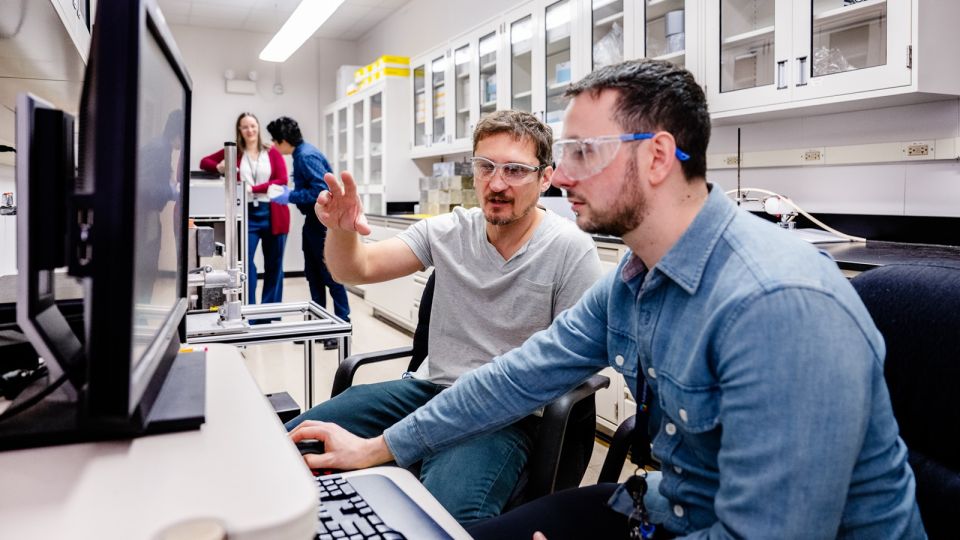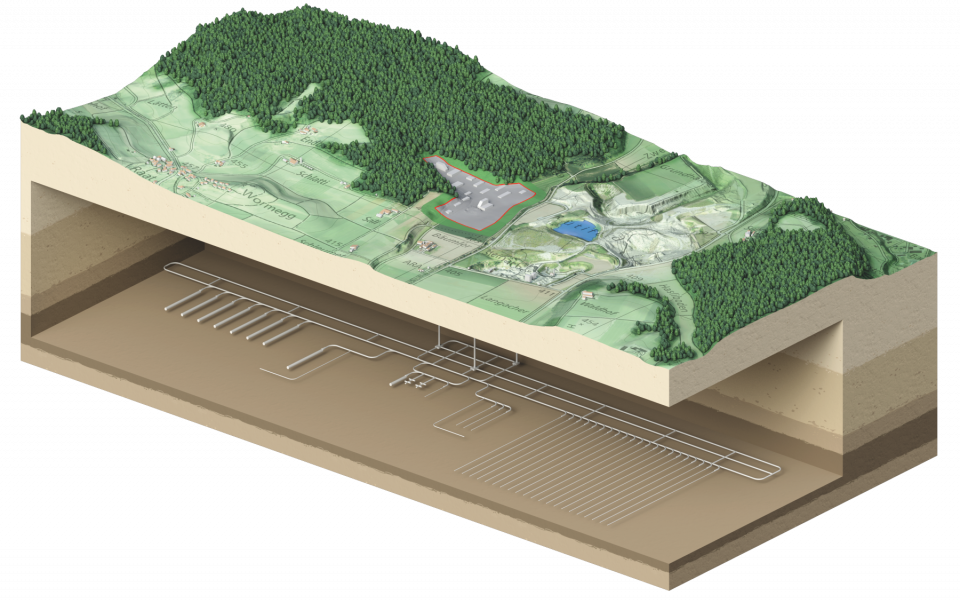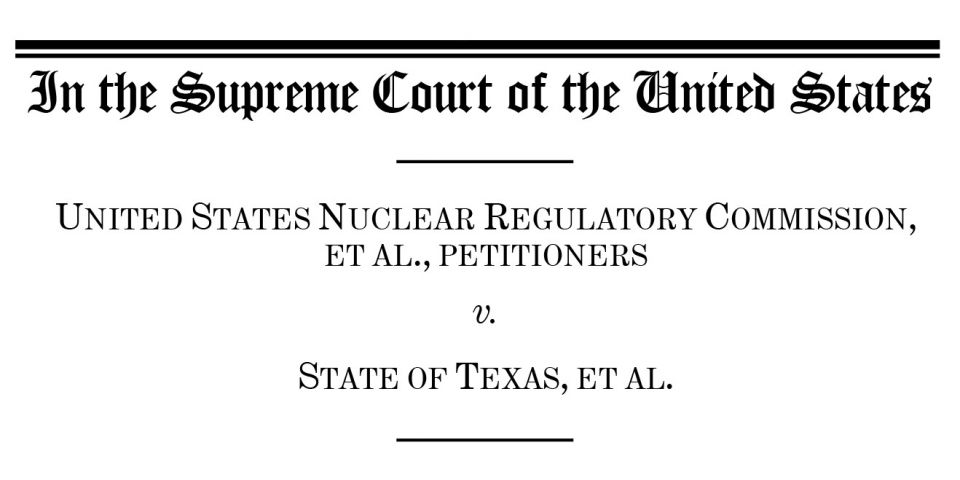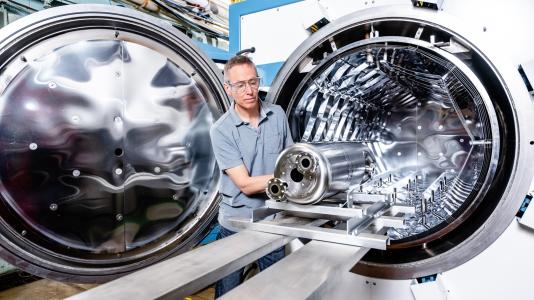The Blue Ribbon Commission’s final report
 Soon after declaring that it would end the Yucca Mountain repository project, the Obama administration created the Blue Ribbon Commission on America's Nuclear Future to reevaluate the nation's nuclear waste program and policies. The commission was asked to recommend improvements to the waste program and the Nuclear Waste Policy Act (NWPA), and to make general recommendations on the path forward. The commission was specifically instructed to not address the Yucca Mountain project, or any specific project or site. The commission's final report was released this month.
Soon after declaring that it would end the Yucca Mountain repository project, the Obama administration created the Blue Ribbon Commission on America's Nuclear Future to reevaluate the nation's nuclear waste program and policies. The commission was asked to recommend improvements to the waste program and the Nuclear Waste Policy Act (NWPA), and to make general recommendations on the path forward. The commission was specifically instructed to not address the Yucca Mountain project, or any specific project or site. The commission's final report was released this month.
Primary recommendations
The main recommendations of the Blue Ribbon Commission (BRC) are as follows:
• A repository (or long-term storage facility) should be sited using a "consent-based" approach, as opposed to having the federal government select a site and then impose it on the state and/or local community. The government would offer incentives to a large number of communities, whose locations are potentially suitable as a repository site, and let communities (and states) come forward voluntarily. (In essence, this implies that Yucca Mountain should be abandoned and the process should start over.)
• Responsibility for siting, licensing, building, and operating repositories and/or centralized storage facilities should be shifted from the Department of Energy to a new, independent single-purpose organization (most likely a federal corporation). Most experts agree that such an organization would offer more focus, stability, and credibility than the DOE, which has lost credibility with many stakeholders.
• The waste program must have full access to the nuclear waste fund that has been paid for by the 0.1 cent/kW-hr fee levied on nuclear-generated electricity. In the short term, the administration should amend the DOE's standard contract so that only the money appropriated (i.e., spent) that year is transferred from the waste fund to the federal government. Remaining funds would be placed in a trust account that is managed by an independent organization. Over the longer term, legislation should be passed that transfers the entire balance of the nuclear waste fund to the new waste management organization.
• A prompt effort to develop a geologic disposal facility is necessary. There is scientific consensus that deep geologic disposal is the best option for final disposal of nuclear waste, and that a geologic repository will be necessary for any type of fuel cycle. The BRC did recommend further research and development of advanced fuel cycles and reactor designs, but stated that committing to a specific fuel cycle option or technology at this point in time would be premature.
• There should be a prompt effort to develop one or more consolidated used fuel storage facilities. This would allow the government to meet its contractual obligation to take the used fuel from utilities much sooner than if it waited for a final repository to be developed. It may also reduce the (small) risks associated with fuel storage somewhat, by reducing the number of sites where fuel is stored. Removing the fuel from decommissioned nuclear sites would free those sites up for other uses.
• Preparations for the eventual shipment of large amounts of used fuel should begin soon. A large number of stakeholders should be involved in the planning of the waste transportation program.
• The government should support research and development into advanced reactors and fuel cycles, as well as nuclear workforce development programs. The BRC stated that the general direction of the DOE's current R&D is appropriate.
• The United States should maintain its leadership role in the international community in the area of nuclear technology. It should provide aid, advice, and technical and regulatory assistance to other countries, particularly those who are starting new nuclear programs.
NWPA changes
The BRC's recommended path forward involves specific changes to the NWPA:
• The NWPA currently specifies Yucca Mountain as the sole site to be evaluated as a repository. The law would have to be changed to allow other sites to be evaluated.
• The NWPA currently allows only one centralized used fuel storage facility with limited capacity, and this storage facility may only be developed after a repository is licensed. The NWPA would have to be amended to allow multiple centralized storage facilities, and to remove any linkage with repository licensing.
• The NWPA would be amended to broaden the number of jurisdictions that could receive funding and technical assistance in support of the fuel transportation campaign.
• The NWPA would have to be amended to create the independent waste management organization discussed earlier, and to shift the DOE's current responsibilities (for siting, licensing, building and operating repositories and/or centralized storage facilities) to that organization.
• The NWPA would also have to be amended to remove the nuclear waste fund from the congressional appropriations process, and to allow the independent nuclear waste management organization to have full access to the fund.
• Some NWPA changes may be required in order to allow the United States to provide a broader range of support to other nations in the area of nuclear waste management.
ANS response
The American Nuclear Society has responded to the BRC's final report. ANS concurs with the BRC's recommendation to create a new, independent agency to manage the nation's nuclear waste in the future. ANS also agrees with the recommendation to create one or more centralized used fuel storage facilities, to accommodate much of the nation's used fuel until a final repository is finally sited, licensed, and constructed. ANS also supports the BRC's call for continued R&D on advanced (closed) fuel cycles.
One area of disagreement between ANS and the BRC, however, concerns the Yucca Mountain repository. While ANS acknowledged that the BRC was explicitly instructed not to address Yucca Mountain, it reiterated its position that the Nuclear Regulatory Commission should conclude the licensing process for the repository (at a minimum).
My perspective
I largely concur with ANS's point of view on the BRC recommendations. Almost everyone believes that having an independent organization, as opposed to the DOE, manage the waste program would be helpful. Allowing full access to the nuclear waste fund (for its intended purpose) is absolutely essential, given the history of Congress in hijacking the waste funds for other uses or for political reasons. Right now, the fund is little more than a (punitive) 0.1 cent/kW-hr tax on nuclear electricity.
I also agree that R&D into advanced fuel cycles and reactors is important. The BRC stated that they do not believe that fuel cycle technology that would significantly alter the nuclear waste situation is anywhere on the horizon. ANS thought that this was overly pessimistic, and I'm inclined to agree. Fuel cycle technologies such as "UREX+" are a few decades away at most. Such fuel cycles have the potential to significantly reduce the bulk and heat generation level for the final waste stream, which should greatly reduce the number of final repositories required (to one, probably). This is enormously important.
I also agree with ANS on the subject of Yucca Mountain. It is imperative that the NRC complete the evaluation and licensing process, and formally rule on whether the Yucca Mountain repository would have been acceptable from a scientific and technical perspective. (Virtually all observers believe that NRC staff had concluded that the repository met the requirements.) This should be demanded as part of any "compromise", in exchange for accepting the BRC's recommendation that we start the repository siting, evaluation, and licensing process all over again (largely wasting the ~$15 billion that has been spent).
I believe that the single largest drawback of starting the repository program over, and delaying final resolution of the waste issue by decades, is that it will result in a large fraction of the public continuing to believe-falsely-that there is no technical solution to the nuclear waste problem. This in turn will measurably increase public resistance to nuclear power, which will result in greater fossil fuel use in the future. The public health risks and negative environmental impacts of this increased fossil fuel use will utterly dwarf any risks and/or impacts associated with any nuclear waste repository.
Although it wouldn't be as good (or effective) as having an actual repository in place, having the NRC formally rule that the Yucca Mountain repository met all of the (impeccable) requirements would go a long way toward convincing the public that we do have acceptable scientific/technical solutions to the nuclear waste problem.
I would go on to insist that the government make sure that NRC's ruling is highly publicized. The government should inform the public that an adequate technical solution to the waste problem has been found, but that we are electing to wait awhile to see if "even better" solutions can be found. Waiting is justifiable and prudent, given the very small risks and economic costs of storing nuclear waste. Those "better" solutions may include the use of advanced fuel cycles that result in a smaller, colder, or shorter-lived waste stream, or simply a final repository that has a greater level of political support from the surrounding state and local communities.
_____________________

Hopf
Jim Hopf is a senior nuclear engineer with more than 20 years of experience in shielding and criticality analysis and design for spent fuel dry storage and transportation systems. He has been involved in nuclear advocacy for 10+ years, and is a member of the ANS Public Information Committee. He is a regular contributor to the ANS Nuclear Cafe.







